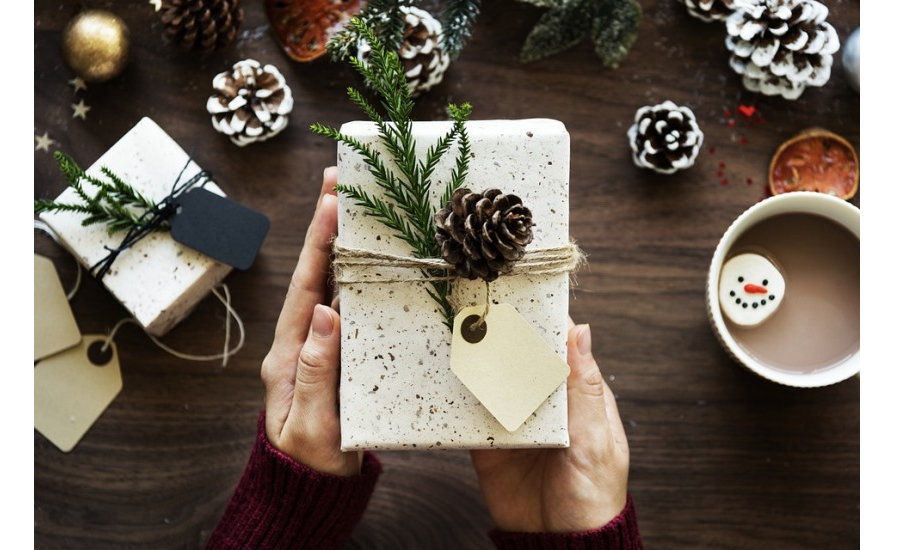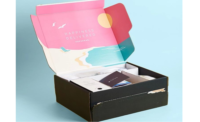How Brands Can Stand Out with Seasonal Packaging

Submitted by WePack, www.we-pack.co.uk
With the holidays just around the corner, brands should consider whether to release seasonal packaging to encourage impulse buys. Businesses know there is a guaranteed rise in shopping over the holidays and that consumers are likely to choose a product that mirrors the season’s festivities in some way. Investing time and money into creative packaging can be an extremely effective way for retailers to stand out from their competitors. According to reports, Toblerone replacing its brand name with ‘Ho Ho Ho’ on its Christmas packaging in 2006 saw the chocolate brand’s sales grow by 400 percent.
1. Choose a Suitable Holiday
An important factor to consider when creating seasonal packaging is which occasion to focus on. Although it’s easy and extremely profitable for confectionery companies to target holidays like Halloween and Christmas, this isn’t necessarily the case for other businesses such as fitness brands.
However, there’s no limit to the type of holiday brands can concentrate on, and as well as occasions such as Valentine’s Day and Thanksgiving some companies may decide to target dates such as Black Friday or iconic sport events such as the Super Bowl. For the Fourth of July in 2013, Budweiser packaged its bottles and cans with a patriotic design that imitated the American flag.
“Making changes to packaging for certain times of the year helps keep a design fresh and it’s a good way to increase sales and stay relevant in consumers’ minds," said Hetal Pandit, director of branding and packaging design agency DCP (dcp-uk.co.uk).
“Brands should consider which event or holiday they would most like to be associated with. There are plenty of opportunities for seasonal packaging but some may be more relevant than others.
“Think of holidays and events that may not be as obvious or help raise awareness to causes close to the brand. Skittles did this brilliantly by removing the color from their packaging to support Pride," Pandit added.
2. Get Creative with Designs
Festive periods are filled with celebrations, giving brands an excuse to experiment with their designs. For Christmas in 2015, Oreo gave consumers the chance to get creative with customized packaging. The cookie brand provided a range of festive-themed black and white illustrations designed by graphic artists that its customers could color in online using a digital palette or with colorful pens at home. The packaging could also be completed with a personal message.
“Christmas is a time of giving so you could create a more premium-looking product through the packaging design and the packaging itself to encourage gift purchases," said Pandit.
For special-edition products released in Christmas 2017, Kylie Cosmetics launched extremely luxurious packaging using glitter, stars and colors associated with this festive period such as green and silver. The beauty brand also named eyeshadow palettes ‘naughty’ and ‘nice’ to capture the holiday spirit.
“By adding a festive element to the packaging with a color change, glitter or ribbons, you’re adding what people are looking for during this period,” said Mick Clark, managing director at U.K. contract packaging specialists WePack (we-pack.co.uk). “You can add value to the packaging by giving them a touch of luxury.”
3. Avoid Overstocking Seasonal Designs
A common mistake companies make through the festive period is overestimating the number of products it needs to package in the new design. If it hasn’t sold all of its stock once the occasion has passed, the company may need to discount items that are no longer seasonally relevant. Even though large establishments can afford this cost, smaller businesses could lose a lot in revenue.
According to Mick Clark, however, there are ways around this. “We are seeing more and more companies trying not to steer too far away from the original design and only making minor changes during the festive seasons.
“The last thing people want is for mountains of stock to be left over and having to sell them for rock‑bottom prices once the occasion has been and gone. By adding something that can be removed such as a label or ribbon, you can quickly revert it back and be able to sell the product after the event.”
To keep seasonal packaging relevant for longer, Hershey’s included autumnal leaves on its seasonal design instead of Halloween symbols, to represent the change of weather instead of the holiday date.
“You could argue that brands should take more risks to engage with the consumer and think about what will look interesting and stand out on a shelf,” Pandit said. “Seasonal packaging can be cost-effective, especially if brands haven’t updated their designs in a while, but it’s important to keep an eye on your budget and see what makes commercial sense.
“Brands could even focus on winter packaging and make it less about Christmas so they can keep the product on the shelf after the New Year and reduce some of the risk.”
4. Ensure Designs Still Represent the Brand
When designing seasonal packaging, it’s vital to keep the brand or product recognizable to avoid confusing consumers. Coca-Cola notoriously came under fire in 2011 after launching 1.4 billion limited-edition white cans to promote its Arctic Home campaign. Because the cans appeared very similar to the packaging for Diet Coke products, consumers who mistakenly drank the full-fat version complained in such numbers that the company was forced to release alternatives of its special‑edition packaging in the usual red color.
5. Make Decisions as Soon as Possible
There are a lot of decisions to make when creating seasonal packaging and it’s important that companies have enough time to do this to ensure they are ready for the event. They should also allow additional time in case complications arise or designs need changing.
6. How Much Will It Cost?
According to Canny Creative (canny-creative.com), a new packaging design can cost anywhere between £1,000 and £10,000 (U.S. $1,283.74 and $12,837.38).
Mick Clark said: “Deciding what to spend depends on the product and how limited it is. If something has a higher retail value, you can probably afford to enhance it significantly. Whereas you might need to limit what you spend if your business is small.
“If companies have a limited amount of time, they might have to use an external packer who might add the extras on for an additional cost.”
Looking for a reprint of this article?
From high-res PDFs to custom plaques, order your copy today!





